Vigan empanada is similar to a taco shell when fried to a crisp with vegetable like grated papaya or bean sprouts and meat filling inside. It is also added with raw egg in the center and will cook together with the empanada when fried. Among the other kinds of empanada, what I love in this kind is the crispy thin shell and when you munch it you will taste the grated papaya and the longganisa plus the soft cooked egg inside.
Specially when you dip or pour it with some sukang Iloko, it is absolutely yummy! Cooking this empanada is a little bit tricky although the ingredients are very simple. Making the dough is a challenge if you will not do it properly.
The Irresistible Charm of Vigan Empanada
There’s something undeniably special about the Vigan empanada from Ilocos. My fondness for this dish isn’t just about the crispy shell or the savory filling inside; it’s about the memories tied to it, the conversations shared over a plateful, and the way it connects me to my roots.
I first tasted this unique delicacy during one of our family trips to Vigan, a charming town known for its cobblestone streets and Spanish colonial houses. My brother, who had spent some time working in Ilocos, insisted that we try it fresh off the street stalls. I remember watching the vendors expertly roll the dough, fill it with grated papaya, longganisa, and a raw egg, and then deep-fry it to a perfect golden crisp. That moment stayed with me, and years later, I’m still trying to recreate the same magic in my own kitchen, guided by the tips and tricks passed down from relatives.
A Delightful Mixture of Flavors and Textures
What sets Vigan empanada apart from others is its perfect combination of textures and flavors. Unlike the baked empanadas we often find elsewhere, this version is fried to a crispy perfection. The dough, thin yet strong enough to hold the filling, crackles as you take that first bite, giving way to the soft, savory contents inside. The grated papaya, lightly sautéed with garlic and onions, adds a subtle sweetness and crunch. Meanwhile, the local longganisa brings a savory richness that pairs beautifully with the tang of sukang Iloko, a type of vinegar native to the region.
The egg, nestled at the heart of the filling, ties everything together. As it fries along with the dough, it becomes soft and slightly runny, creating a delightful contrast in texture. It’s this blend of crispy, savory, and soft that makes each bite so satisfying.
A Bit of History: How This Dish Came to Be
The empanada’s journey to the Philippines traces back to Spanish colonization. Empanadas, as the name suggests, were originally introduced by the Spaniards. However, over time, the dish evolved in the hands of local cooks. In Ilocos, it took on a life of its own, reflecting the flavors and ingredients unique to the region.
What’s particularly interesting is how the locals embraced the simple yet flavorful ingredients available to them. Instead of using meat fillings common in Spanish empanadas, the Ilocanos added their regional sausage, longganisa, and fresh vegetables like grated papaya. The result was something entirely different, yet undeniably delicious called Vigan empanada — a reflection of how traditional recipes can be transformed by local culture and ingredients.
The Secret to Perfect Empanada Dough
One of the trickiest parts of making Vigan empanada is the dough. I learned this the hard way when I tried making it for the first time. My uncle, a fantastic home cook who spent many years in Ilocos, always warned me that the dough would make or break the empanada. It’s not about the filling, he’d say, but the shell. He taught me the secret to achieving the perfect texture: using rice flour, which gives the shell that signature crispiness.
The dough is prepared with a mixture of rice flour, water, salt, and annatto powder, which not only adds color but also a subtle flavor. Boiling the mixture until it forms a smooth, pliable dough is key. You then have to knead it just enough so it’s firm but easy to roll out. The trick, as my uncle always emphasized, is not to overwork the dough—it needs to be rolled thin, like a pizza crust, but strong enough to hold the filling without tearing.
Vigan Empanada Cooking Tips from My Relatives
When it comes to the filling, everyone in my family has their own little twist. My aunt, for example, insists on adding a pinch of sugar to the grated papaya to enhance its natural sweetness. My cousin, on the other hand, prefers sautéing the longganisa with a touch of vinegar to cut through the richness. But one thing we all agree on is the importance of using fresh ingredients. The grated papaya should be crisp and the longganisa should be flavorful, as these are what give the dish its unique character.
When assembling the Vigan empanada, it’s crucial to work quickly. Once the filling is in, you need to fold the dough and seal the edges before the dough has a chance to dry out. A quick fold, a press with the fingertips, and you’re ready to fry. Deep-frying the empanada until it turns a golden brown ensures a satisfying crunch with every bite. Once done, it’s drained of excess oil and served hot with a side of sukang Iloko, which cuts through the richness of the filling with its tangy, slightly sweet flavor.
Bringing the Taste of Ilocos to Your Table
Recreating Vigan empanada at home has become somewhat of a family tradition. Every time I make it, I’m transported back to those warm afternoons in Ilocos, sitting by the plaza, savoring the simple yet complex flavors of the empanada. It’s not just food—it’s a slice of heritage, a way to connect with the past, and a delicious reminder of the beautiful diversity of Filipino cuisine.
If you’re new to Vigan empanada, don’t be intimidated by the process. It might take a few tries to get the dough just right, but trust me, it’s worth the effort. And when you take that first crispy, flavorful bite, you’ll understand why this delicacy has captured the hearts (and stomachs) of so many Filipinos for generations.
How to Make Vigan Empanada
Ingredients
Empanada dough ingredients:
- 1 1/2 cup rice flour (ordinary rice flour not glutinous rice)
- 1/2 tsp. annatto powder or 1 Tbsp. annatto seeds
- 1 cup water
- 1 tsp. salt
- 2 Tbsp. cooking oil
Empanada Filling ingredients:
- 1 pc green Unripe papaya, grated
- 8 pcs. Vigan longganisa chopped (remove the casing)
- 1 pc white onion chopped
- 3 cloves garlic minced
- 6 pcs raw eggs
- salt and pepper to taste
- Cooking Oil for deep frying
Kitchen utensils:
- wax paper
- rolling pin
Instructions
How to make Vigan Empanada:
- In a pan, put water, cooking oil, salt and annatto powder. Bring to a boil. If you are using annatto seeds, put the annatto seeds in a small metal strainer and soak it in the water while boiling. Then remove it after 1 to 2 minutes.
- Put the rice flour in the pan then stir with a wooden spatula or spoon. Stir until the water is absorbed by the rice flour and continue mixing until it forms into a dough and dry to the touch. Remove from heat and cool.
- Knead the dough until smooth and divide the dough into six equal parts and form into balls. Set aside.
- In a pan, heat oil and saute garlic and onions until fragrant. Add the longganisa and saute until cooked. Season with salt and pepper to taste.
- To assemble the Vigan empanada; Arrange the ingredients in separate bowls or containers; the longganisa, grated papaya, eggs, and dough. Lay a piece of the wax paper on a flat surface and put a dough ball(brush some oil on the wax paper and the dough). Put another wax paper on top of the dough and flatten it with your palm. Then roll it with a rolling pin until flattens into a circle and about 1/8 inch thick. Similar to making a thin crust pizza dough.
- Remove the wax paper on the top surface and fill it in the center with some grated papaya and longganisa, about 1 1/2 tablespoons of each of the ingredients. Make a hollow space on the center of the filling and crack a raw egg on it.
- Immediately fold the empanada into a semi circle shape and seal the edges. You can use a plastic plate to trim the edges and make a nice rounded edge. Do the same to the rest of the ingredients. Deep fry the empandas until golden brown and crisp. After cooking, place on a wire rack or paper towels to drain excess oil. Serve hot with sukang iloko as a dipping sauce. Enjoy!
Notes
Cooking Tips for Vigan Empanada:
Perfecting the Dough Texture
The key to a crispy yet durable empanada shell lies in the dough's consistency. Use rice flour and be sure to knead it until smooth, but avoid overworking it, which can make the dough tough. Roll it out thin, about 1/8 inch, so it fries evenly and crisps up without breaking.Preparing the Filling
For the best flavor, sauté the longganisa with garlic and onions until fully cooked and fragrant. Make sure the grated papaya is fresh and squeezed of excess moisture to prevent sogginess. Keep the filling ingredients separate and ready before assembling to avoid delays that can dry out the dough.Frying to Golden Perfection
Heat the oil thoroughly before frying to ensure the empanada crisps up quickly and doesn't absorb too much oil. Fry in small batches, carefully turning the empanadas to achieve an even golden-brown color. Once done, drain them on paper towels or a wire rack to remove excess oil and maintain their crunch.
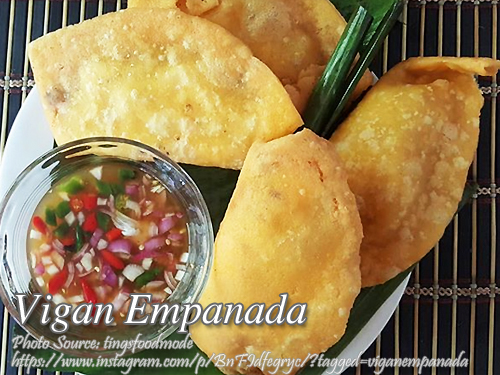

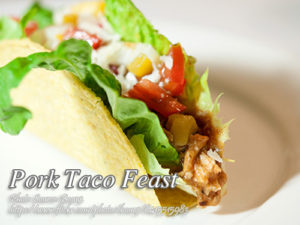
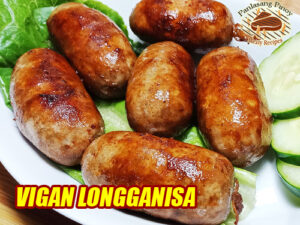
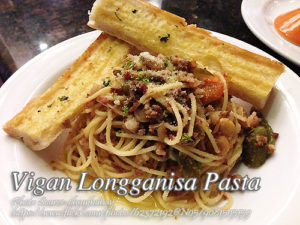
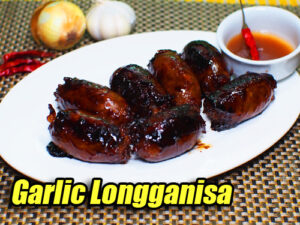
we tried this recipe just now, and followed the instructions as it is our first time but, it did not work for us. the dough is too sticky, and after frying, it does not taste like the vigan empanada at all. it tastes more like that of unflavored carioca. we only tried frying one serving of dough and ended up throwing away the rest, as it is no good at all. any tip on how to make it better next time?
Hi Anne, try using an ordinary rice flour not the glutinous rice flour.
Hi I made half a batch of the dough recipe but it didnt work well for me, idk what went wrong. It was too sticky. Any tips on how I can pull it off better?
Maybe you need to add more water to make it less sticky.
Hi i wpuld like to clarify if its glutinous rice flour or just rice flour. Thanks
Hi Lani, its glutinous rice flour but some say they are using ordinary rice flour.
Thanks for sharing this vigan empanada recipe! I’m going to make it tonight!
Hi Josephina! you’re welcome!